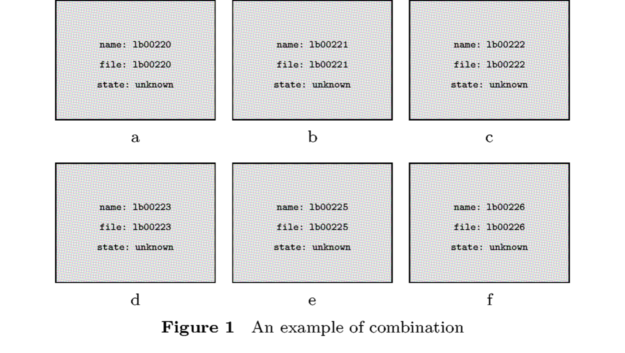Difference between revisions of "Combinations"
m |
m (make categorization match the new site organization) |
||
| Line 32: | Line 32: | ||
There is {{cmd|setupcombinations}} command. | There is {{cmd|setupcombinations}} command. | ||
| − | |||
| − | |||
| − | |||
== Referencing == | == Referencing == | ||
| Line 47: | Line 44: | ||
This would produce something like 'figure 2.4d'. The content of the second parameter simply gets appended to the end of the figure's reference-number, thus the example above would still work even if the caption would be 'd) An awesome subfigure'. | This would produce something like 'figure 2.4d'. The content of the second parameter simply gets appended to the end of the figure's reference-number, thus the example above would still work even if the caption would be 'd) An awesome subfigure'. | ||
| + | |||
| + | |||
| + | [[Category:Graphics]] | ||
Revision as of 12:52, 8 June 2020
Combinations are ConTeXt's way to align several pictures (preferrably at same size):
\startcombination[x*y] {something}{caption} ... ... \stopcombination
means:
You define, how much figures in columns * rows you'd like to align.
You must provide one "figure something" (e.g. an \externalfigure) and a caption for every "cell".
The sample, from the manual, shows how to define a caption for the whole group and use it as float (see Floating Objects):
\placefigure [here] % placement option [fig:combinations] % reference {An example of combination} % caption for whole group { \startcombination[3*2] % 3 columns, 2 rows {\externalfigure[lb00220]} {a} {\externalfigure[lb00221]} {b} % picture and caption for two figures in first row {\externalfigure[lb00222]} {c} {\externalfigure[lb00223]} {d} {\externalfigure[lb00225]} {e} {\externalfigure[lb00226]} {f} \stopcombination } % whole combination in braces of placefigure

Setup
There is \setupcombinations command.
Referencing
To reference a subfigure you can provide the subfigure's caption as a second parameter to the \in command.
To reference the subfigure with the caption d you would write:
\in{figure}{d}[fig:combinations]
This would produce something like 'figure 2.4d'. The content of the second parameter simply gets appended to the end of the figure's reference-number, thus the example above would still work even if the caption would be 'd) An awesome subfigure'.